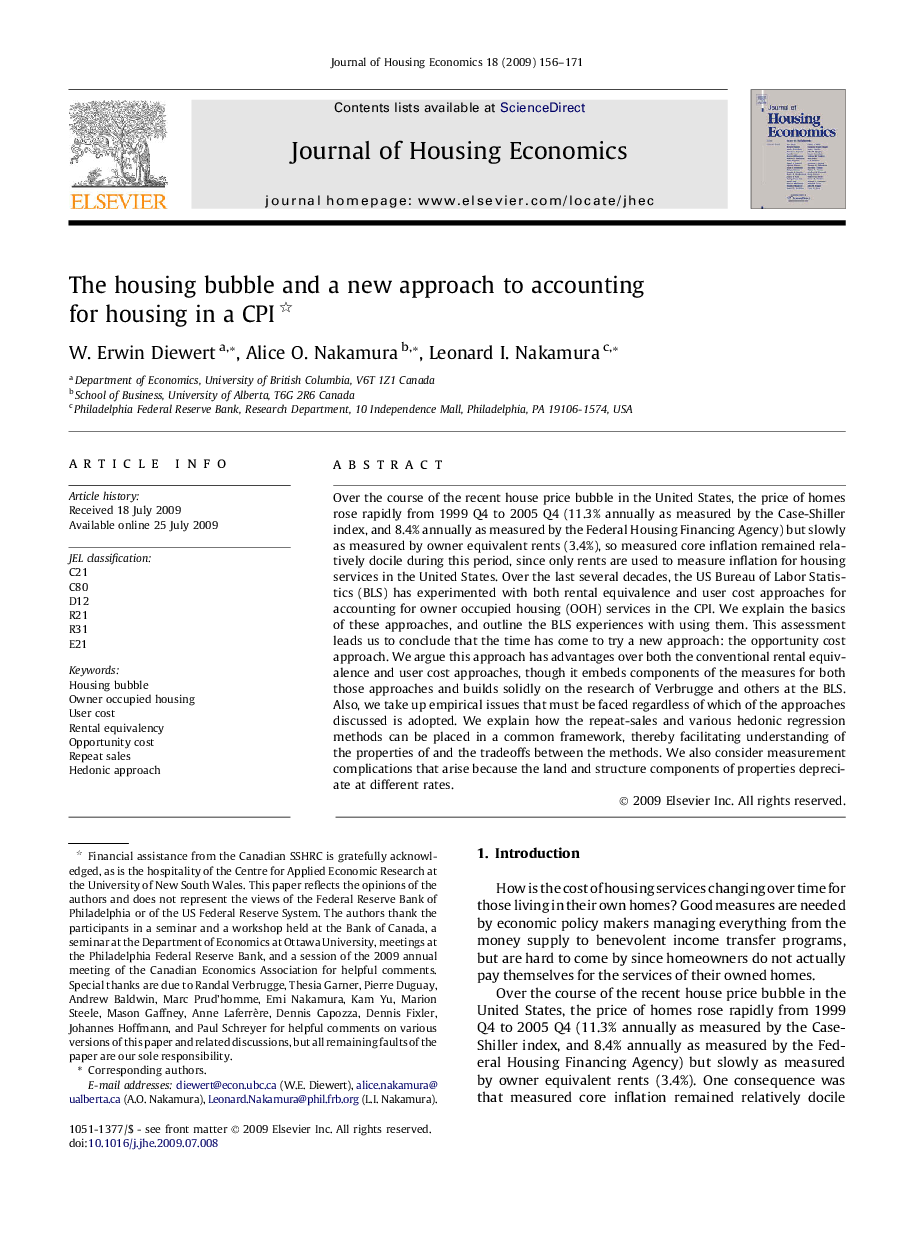| Article ID | Journal | Published Year | Pages | File Type |
|---|---|---|---|---|
| 962128 | Journal of Housing Economics | 2009 | 16 Pages |
Abstract
Over the course of the recent house price bubble in the United States, the price of homes rose rapidly from 1999 Q4 to 2005 Q4 (11.3% annually as measured by the Case-Shiller index, and 8.4% annually as measured by the Federal Housing Financing Agency) but slowly as measured by owner equivalent rents (3.4%), so measured core inflation remained relatively docile during this period, since only rents are used to measure inflation for housing services in the United States. Over the last several decades, the US Bureau of Labor Statistics (BLS) has experimented with both rental equivalence and user cost approaches for accounting for owner occupied housing (OOH) services in the CPI. We explain the basics of these approaches, and outline the BLS experiences with using them. This assessment leads us to conclude that the time has come to try a new approach: the opportunity cost approach. We argue this approach has advantages over both the conventional rental equivalence and user cost approaches, though it embeds components of the measures for both those approaches and builds solidly on the research of Verbrugge and others at the BLS. Also, we take up empirical issues that must be faced regardless of which of the approaches discussed is adopted. We explain how the repeat-sales and various hedonic regression methods can be placed in a common framework, thereby facilitating understanding of the properties of and the tradeoffs between the methods. We also consider measurement complications that arise because the land and structure components of properties depreciate at different rates.
Related Topics
Social Sciences and Humanities
Economics, Econometrics and Finance
Economics and Econometrics
Authors
W. Erwin Diewert, Alice O. Nakamura, Leonard I. Nakamura,
